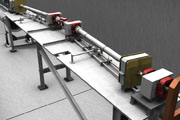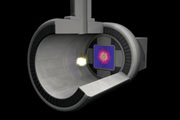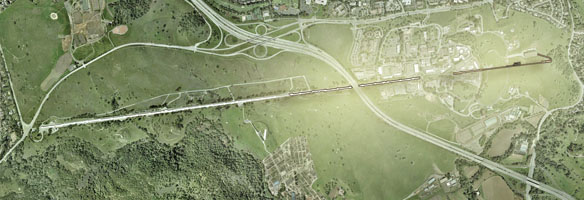
Rendering of the femto-camera.
LCLS civil construction took just over 3 years to complete.
Rendering of the LCLS site at SLAC.
A Femto-Camera for Molecular Movies
By sequencing together images of the ultrasmall, taken with the ultrafast pulses of the LCLS, scientists are for the first time creating molecular movies, revealing the frenetic action of the atomic world for us to see. Understanding the precise dynamics at work on these scales will forever change our understanding of chemistry, physics and materials science.


Construction and First Experiments
The first X-ray pulses streamed through the machine in April
2009. Some of the first LCLS experiments imaged parts of the
photosynthetic system found in plants. Understanding how
nature converts sunlight to energy could lead to the technology we
need to safely and efficiently power the future. Other experiments
have revealed the first images of an intact virus in its natural state
as well as the 3-D structure of proteins that generate energy for life and play key roles in disease.
Transforming SLAC's venerable linear accelerator into a next-generation X-ray light source has benefited from the efforts of hundreds of scientists from all over the world. The LCLS project is a collaboration among Department of Energy laboratories including SLAC, Argonne, Brookhaven, Los Alamos and Lawrence Livermore national laboratories; and the University of California, Los Angeles.


